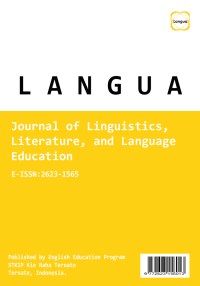The Slang Words from Turning Red Movie Script
Abstract
This study examines the types and functions of slang words in the movie script of "Turning Red," a comedic and fantastical animated film released in 2022. Slang, as an informal and dynamic form of language, plays a significant role in contemporary socialization and communication among young people. The research draws on sociolinguistic perspectives to explore the different categories and functions of slang words in the movie script. The analysis was conducted based on the theories proposed by Allan & Burridge (2006). The findings of the analysis reveal various types of slang words used in the movie script, including fresh and creative, flippant, imitative, acronym, and clipping types. The collected data is analyzed by using the descriptive qualitative method since it did not involve any numerical data. This study contributes to the understanding of slang as a sociolinguistic phenomenon and its significance in contemporary media, specifically in movie scripts. By examining the types and functions of slang words in "Turning Red," the research provides insights into the linguistic choices made by the filmmakers to reflect the experiences and language use of young people. The findings enhance our understanding of how slang contributes to the portrayal of social and cultural aspects in movies, highlighting its impact on society and language evolution. The study also examines the sociolinguistic functions of slang in the movie, shedding light on its role in expressing identity, fostering social connections, and reflecting contemporary youth culture.
Downloads
Copyright (c) 2023 Shan Derwin Susanto, Luh Putu Laksminy, Ni Luh Putu Krisnawati

This work is licensed under a Creative Commons Attribution 4.0 International License.
Authors who publish with Langua Journal of Linguistics, Literature, and Language Education agree to the following terms:
- Authors retain copyright and grant the journal right of first publication with the work simultaneously licensed under a Creative Commons Attribution License that allows others to share the work with an acknowledgement of the work's authorship and initial publication in Langua.
- Authors are able to enter into separate, additional contractual arrangements for the non-exclusive distribution of the journal's published version of the work (e.g., post it to an institutional repository or publish it in a book), with an acknowledgement of its initial publication in Langua.
- Authors are permitted and encouraged to post their work online (e.g., in institutional repositories or on their website) prior to and during the submission process, as it can lead to productive exchanges, as well as earlier and greater citation of published work.






